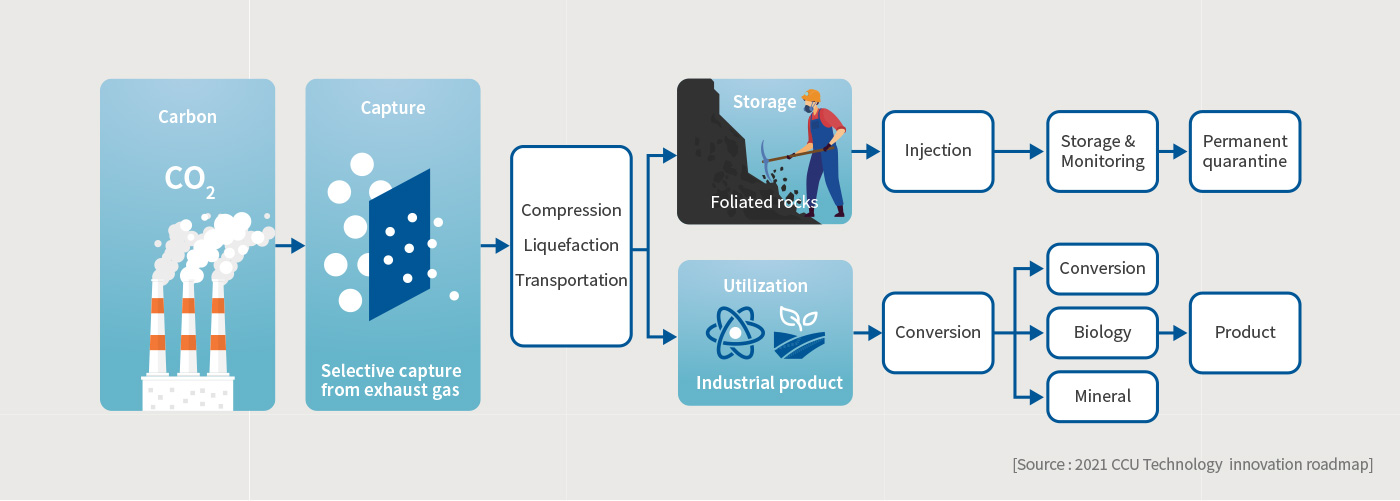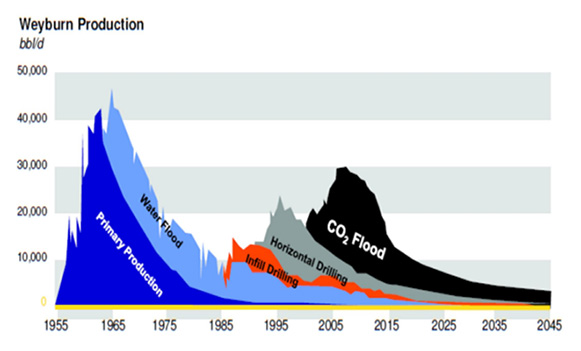Carbon Capture Storage and Utilization
CCUS
STICO Lab is advancing several carbon capture and storage opportunities around the world to help support our commitment to the Paris Agreement.

CO2 released into the air from an emission source

CCUS technology is a technology that prevents carbon dioxide from being emitted into the air from the source of production (Carbon Capture) and uses it where it is needed (Utilization) or stores it underground (Storage). 2030 NDC : Committed to reducing CO2 emissions by 40% com-pared to 2018 by 2030 (Declared in COP26) The IEA (International Energy Agency) judges that the CCUS Technology is the most feasible.

After collecting CO2 in a plant that emits a lot of CO2, it is transferred to a supercritical fluid by applying a pressure of 80 to 100 atmospheres. Then, CCS technology means spraying and isolating in oil fields and salt water layers located 800 to 1,000 meters underground. If storage loca-tions are difficult to obtain, the captured CO2 can be liquefied for use in welding, smart farms, or converted into other useful materials. CO2 conversion methods include mineralization, microalgae and chemical methods.
Global CO2 HUB Construction status
- Total : 64HUB
- In operating : 26
- Under construction : 4
- Design stage [feed] : 13
- Development stage : 21

Example of the yield from EOR
Incremental recovery 155 MMbbls
Sequestration 45 million tonnes CO2

In Korea, the government is planning to build a large-scale CO2 HUB to store and utilize the captured carbon dioxide. Due to the limited geological space in Korea, CCUS technology using EOR (Enhanced Oil Recovery : Carbon dioxide is injected into the stratum from oil fields that are mined to increase oil production) will be applied. The US plans to invest $12 billion to build 14 large hubs, with global CO2-EOR potential demand exceeding 156 billion metric tons.
